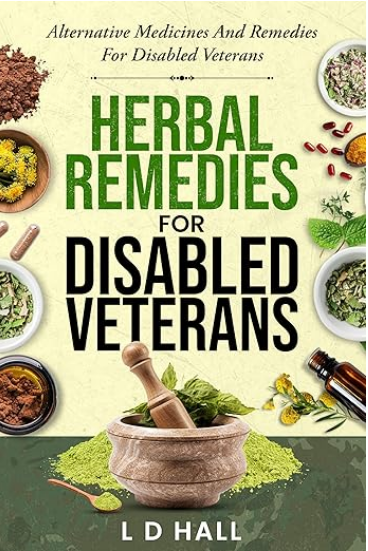Herbs are some of the best plants to grow at home.
These easy bitters benefit the environment, body, and immune systems. These small plants are an excellent investment not only for your body but also for your mental health. L.D. Hall, in her book Herbal Remedies for Disabled Veterans, provides a comprehensive guide on growing the best herbs in a home garden.
If you plan to live a happy and healthy life while consuming herbs, check out some of the best tips about home gardening.
1. Gardening Tools You Will Need
For beginners, you must first prepare your home garden toolkit, including gloves, a trowel, and a watering can to water the seedlings. To better understand the process, you can join a home gardening workshop or gardener communities to share or receive expert insights.
You should also have enough knowledge of pest management, insects, and weeds. Which pesticide should we use, and how much should we use? These are essential aspects that a home gardener should know before committing to the process.
2. Soil Preparation and Planting
The next step is preparing your soil for the herbs. Every herb has a specific pH level (acidity) that shows the best growth; most thrive in neutral to slightly acidic conditions. Add compost with essential nutrients, and divide the gardening space equally for each herb you plant.
If your home garden is too overcrowded, plants compete with each other for sunlight and nutrients, reducing their yielding power. Spacing recommendations are usually on the seedling packet.
3. Maintenance Tips for Your Home Garden
Home gardens, even with low-maintenance plants, require regular upkeep. Watering the plants in the morning reduces water loss and the onset of fungal disease.
You can also try mulching, which involves covering the surface of your soil bed with leaves, twigs, grass, crops, and straws to enhance the activity of plant-friendly organisms like earthworms. Weeding is another crucial process that allows the nutrients in the soil to reach your herbs by removing invasive plants and weeds.
4. How to Select Herbs For Your Home Garden
Before you buy the seedling, it is better to understand some critical considerations.
First, check out your home’s climate and growing conditions, the sunlight your garden receives (most herbs prefer full sun), and the soil type. Well-drained soil works best for healthy growth. Next, consider your culinary preferences; choose herbs you frequently use in cooking, such as basil, parsley, cilantro, or thyme, while also considering a mix for variety.
Decide between annual herbs, which need replanting each year, and perennials that return season after season. Pay attention to the space each herb requires, as some, like mint, can spread aggressively, while others, like chives, need less room. Some herbs require constant moisture, while others prefer drier conditions. Also, consider how much time you can dedicate to pruning and harvesting.
Visit local nurseries or farmers’ markets to find herbs best suited for your home. Don’t hesitate to experiment with less common varieties. By starting small and gaining experience, you can gradually expand your herb garden and enjoy its benefits.
Companion planting is also a great option as some herbs can benefit nearby plants—basil, for instance, can repel pests that affect tomatoes.
Herbal Remedies for Disabled Veterans by L.D. Hall offers a comprehensive alternative medicine guide for veterans facing unique health challenges. This guide provides simple, natural remedies tailored to individual needs, addressing issues like chronic pain and Post Traumatic Stress Disorder (PTSD). It emphasizes safety and the importance of consulting healthcare professionals and offers practical tips for sourcing and maintaining herbal solutions.
Discover the powerful path to healing beyond conventional treatments. Read L.D. Hall’s Herbal Remedies for Disabled Veterans now. The book is available on Amazon.



